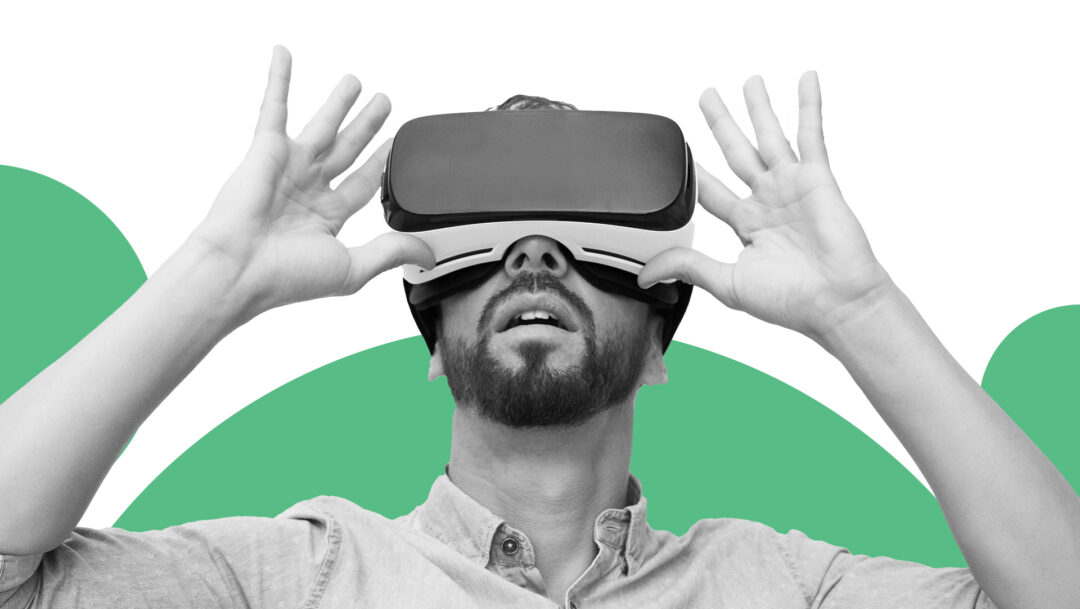California, often recognized as the tech mecca of the world, is home to Silicon Valley and a vibrant tech industry. Featuring major players like Google, Apple, and Meta, this sector generates over $600 billion and employs 1.5 million people.
But what about the everyday tech habits of Californians?
In 2023, we surveyed 531 individuals from California, to better understand:
- How they use their devices
- Where and how they shop online
- Their views on online privacy
- Their use of virtual assistants
- How they learn new skills online
Here’s what we found.
California Tech Industry Overview
California’s tech industry stands as an economic giant, directly generating $623.4 billion—19% of the state’s economy, with a total economic impact approaching $1 trillion when including ripple effects (30% of GRP). With a workforce of 1.5 million people, the industry has transformed the state into the world’s leading tech hub, driving innovation across multiple sectors.
However, the Golden State is facing a tech jobs exodus. The share of all U.S. tech jobs located in California has dropped to its lowest level in a decade, falling by a full percentage point in just one year, according to the Bureau of Labor Statistics. While Silicon Valley still saw a net gain in tech jobs in 2023, companies like Oracle, Tesla, and Palantir have relocated to states like Texas and Colorado, citing high costs and stringent regulations.
Despite the exodus, Californians working in tech still earn the highest average salaries in the U.S. at $142,270 annually, according to a study by Zibtek. Washington ($137,260) and Massachusetts ($126,150) follow closely behind.
While Silicon Valley remains the heart of California’s tech scene, the industry’s influence extends far beyond this renowned region. Three emerging tech hubs are reshaping the state’s technology landscape:
• San Diego: Leading the biotech revolution
• Los Angeles: Home to a dynamic startup ecosystem
• Bakersfield: Developing as a new tech frontier
The success of California’s tech ecosystem rests on three fundamental pillars:
- Educational Excellence: Home to the nation’s top-ranked computer science programs.
- Robust Investment: A thriving mix of venture capital and corporate funding. Venture capitalists play a critical role in supporting the high-tech industry in regions like Silicon Valley by providing the necessary funding and resources.
- Innovation Culture: A magnet for global talent.
This unique combination of factors has created an unstoppable momentum, securing California’s position as the global leader in technological advancement.
The Digital Life of Californians: Insights from Our Survey
Beyond being home to tech giants, California leads the way in how people use technology in their daily lives. Here’s what our survey of 531 Californians revealed about their digital habits.
Device Preferences: Smartphones Dominate
You can hardly find a technology that spread faster than smartphones in recent history. A study from Pew Research Center found that nearly every American (97%) has a cellphone, with 85% owning a smartphone. The contrast is striking – back in 2011, when they first started tracking this, only 35% of Americans had smartphones.
Here in California, our survey shows that 81.9% of people say their smartphone is their go-to device, reflecting how deeply these devices have become integrated into our daily lives.
Beyond smartphones, Californians are all about mobility in their tech choices. Laptops and tablets are the next popular picks, while desktop computers are becoming less common. SmartTVs are everywhere now that streaming has taken over from cable, and smartwatches are finding their spot, especially among people tracking their health and fitness.
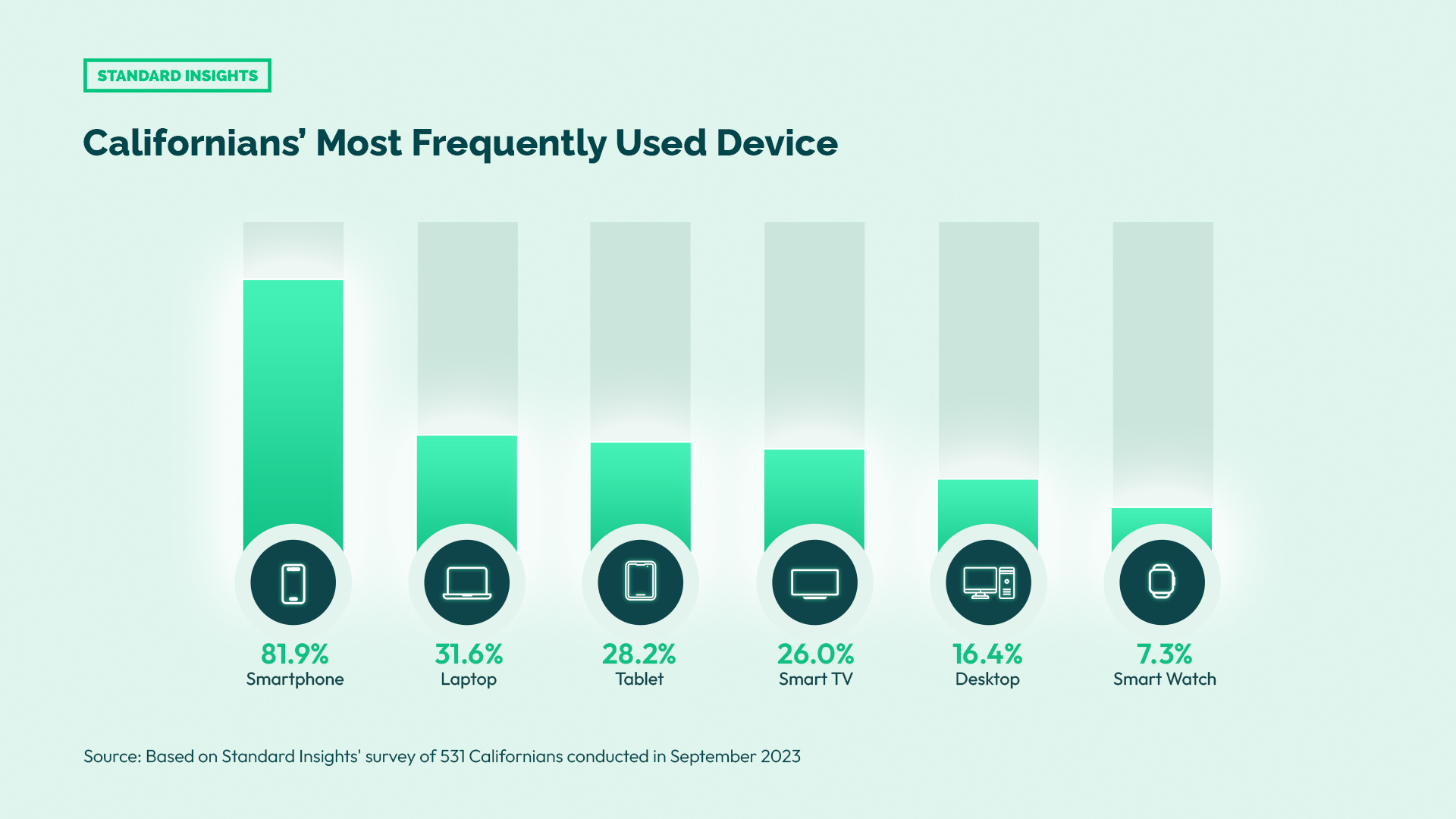
News and Information Consumption
The way we consume news and information has transformed dramatically. Our survey reveals that social media is California’s primary source of information at 36.3%, followed by television at 30.9% and news websites or apps at 25.8%.
This shift is particularly noticeable among younger Californians, where trust in social media nearly matches traditional news outlets. In fact, those under 30 show almost equal confidence in both platforms – about half trust social media compared to 56% who trust national news organizations.

Digital Learning and Skill Development
The pandemic has fundamentally changed how we approach learning new skills. While global platforms like Coursera saw their user base more than double from 44 million in 2019 to 92 million in 2021, California shows its own unique trends. Higher education plays a significant role in fostering tech entrepreneurship among young people in California cities.
Our survey indicates that 31.6% of Californians actively use online platforms to enhance their skills. The most sought-after areas? Courses about data analytics, project management, UX design, and IT support are some of the most in-demand, according to Coursera.
Tech-Infused Living: E-Homes in California
California’s reputation as a tech hub extends right into our homes. Our survey reveals that more than half (50.8%) of Californians have embraced smart home devices, placing California consistently ranks among the top 5 states with the most smart home.
When it comes to newer technologies, there’s an interesting split in adoption rates. While virtual assistants have found their way into 21.7% of homes (with Siri leading at 66.1%, followed by Alexa at 50.4%), VR/AR devices are still finding their footing – only 11.5% of Californians report having tried them.
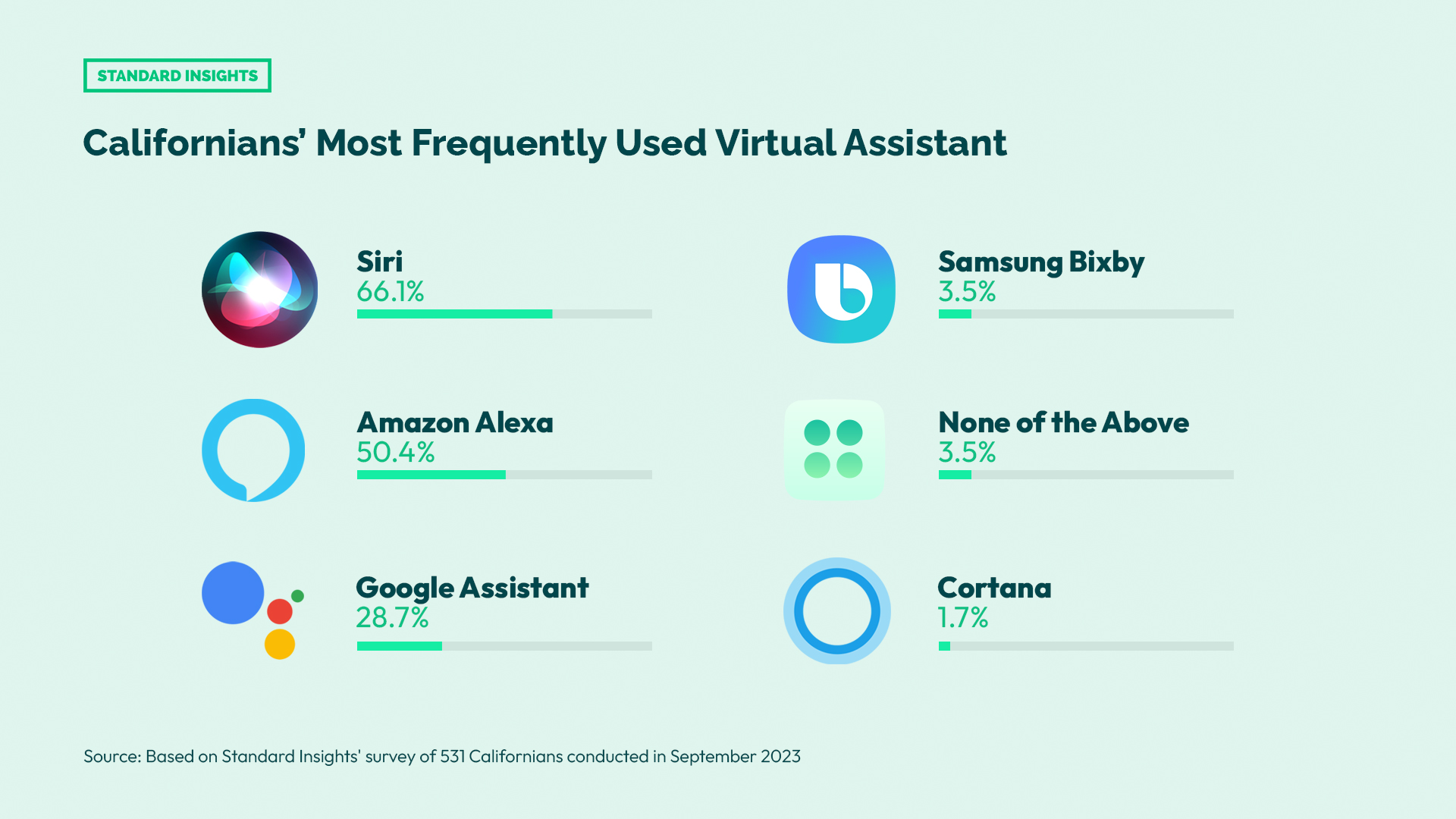
Online Security: Growing Concerns in a Digital World
The flip side of our tech-forward lifestyle is the growing concern about cybersecurity such as security breaches and identity theft,
In 2022, the United States Federal Bureau of Investigation received more than 800,000 cybercrime-related complaints. FBI’s Internet and Crime Complaint Center said over $10 billion was lost last year – $3.1 billion higher than the $6.9 billion reported in 2021.
These threats haven’t gone unnoticed – our survey shows that seven out of ten Californians consider online privacy ‘extremely important.’
E-Commerce: Mobile Shopping on the Rise
The way we shop has undergone a dramatic transformation. U.S. e-commerce hit a record $277.6 billion in Q2 2023, and the number of online shoppers is expected to grow from 268 million in 2022 to 285 million by 2025.
In California, mobile shopping has become the norm – 68.5% of us use shopping apps regularly. Amazon dominates this space with 88.5% of mobile shoppers using their app, followed by Walmart (37.4%), Target (23.4%), eBay (20.1%), and Etsy (7.4%).
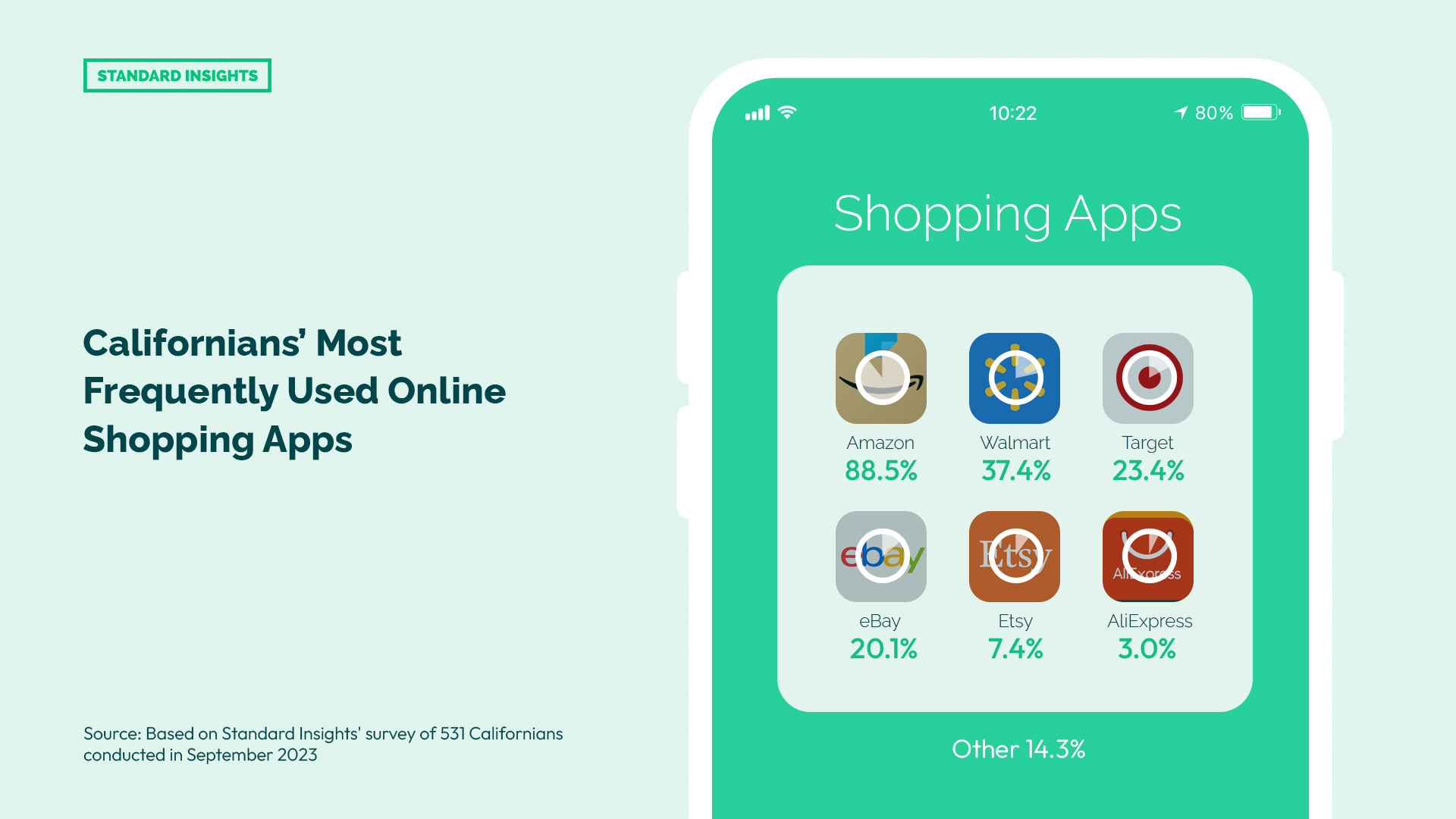
The survey also found that Californians are heavily influenced by promotions when making purchasing decisions. The average ranking for promotion as a factor in buying a new tech gadget was 4.2, the highest of any factor. This was followed by friends’ recommendations (3.9), reviews (3.4), features (3.2), brand (3.6), and price (2.7).
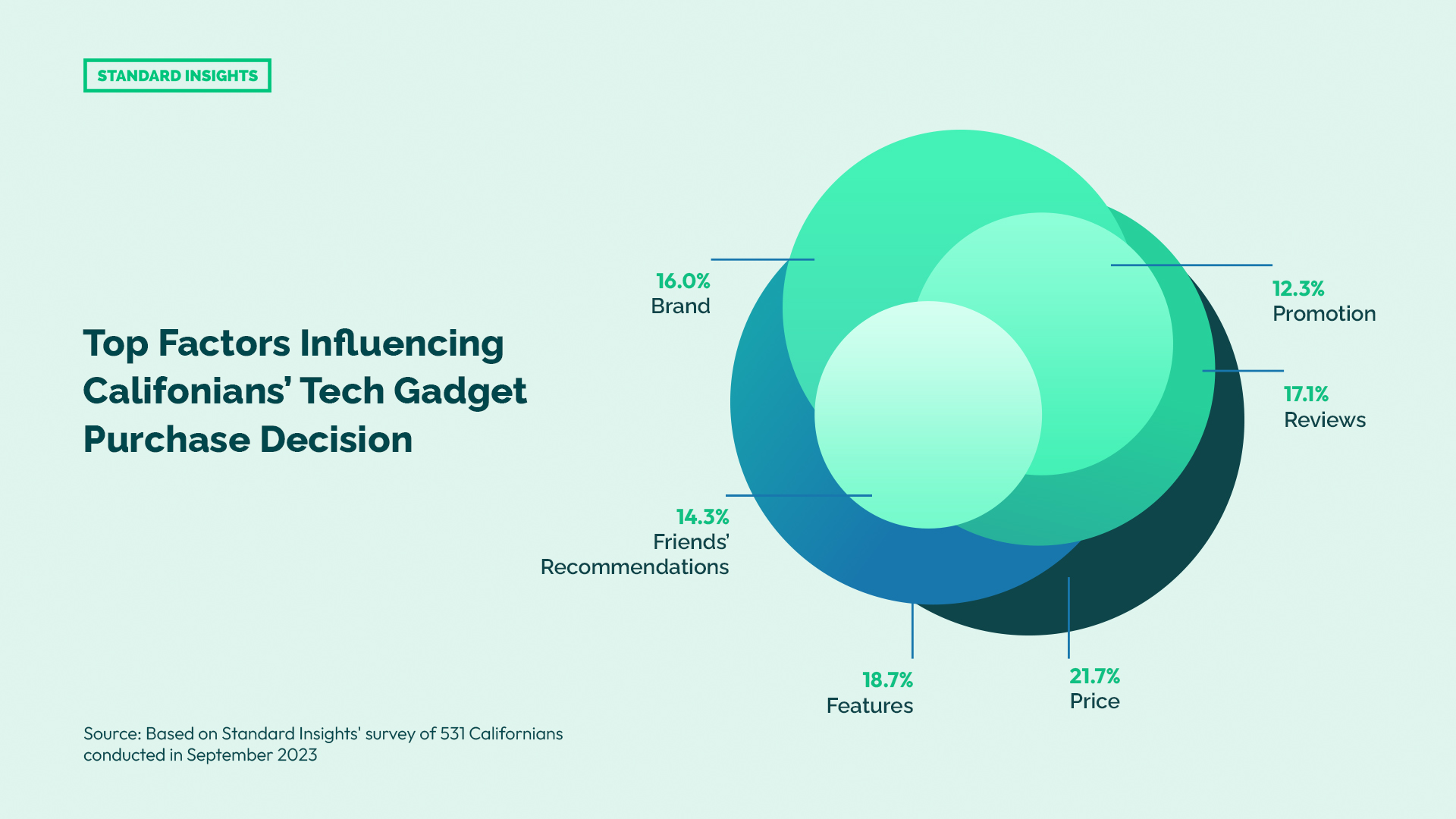
Emerging Trends and Technologies
California continues to push the boundaries of innovation, with several key areas showing promise:
Artificial Intelligence
The state is pushing boundaries not just in AI development, but in its responsible implementation. New legislation taking effect in 2025 will reshape how AI is used across healthcare, education, and public services. Nearly half of all venture capital dollars allocated for AI investments are directed towards businesses in California, showcasing the state’s dominance in the tech sector.
Notable changes include mandatory disclosure of AI chatbots in healthcare and new guidelines for AI use in health insurance decisions.
Gov. Gavin Newsom has already signed bills banning deepfake campaign ads and requiring disclosure of AI content in advertising while vetoing stricter AI testing regulations to avoid stifling innovation.
Extended Reality (XR)
California companies are pioneering new testing standards for immersive experiences, particularly in entertainment and gaming. This systematic approach to XR development is helping establish quality benchmarks for the industry.
Clean Energy
The state’s commitment to sustainability is driving innovation in energy efficiency. The Statewide Gas Emerging Technologies Program and Electric Program are evaluating promising new technologies to improve energy efficiency across sectors.
Cannabis Production Technology
A new frontier is emerging in agricultural technology, with cannabis production driving innovations in controlled environment agriculture and processing techniques.
Financial Technology
The fintech sector is evolving rapidly, with a focus on accessibility and cost-effectiveness. California companies are leading the development of more efficient, technology-driven financial services.
These developments are supported by robust regulatory frameworks, particularly in AI governance, where California’s proactive approach is setting standards for responsible innovation.

